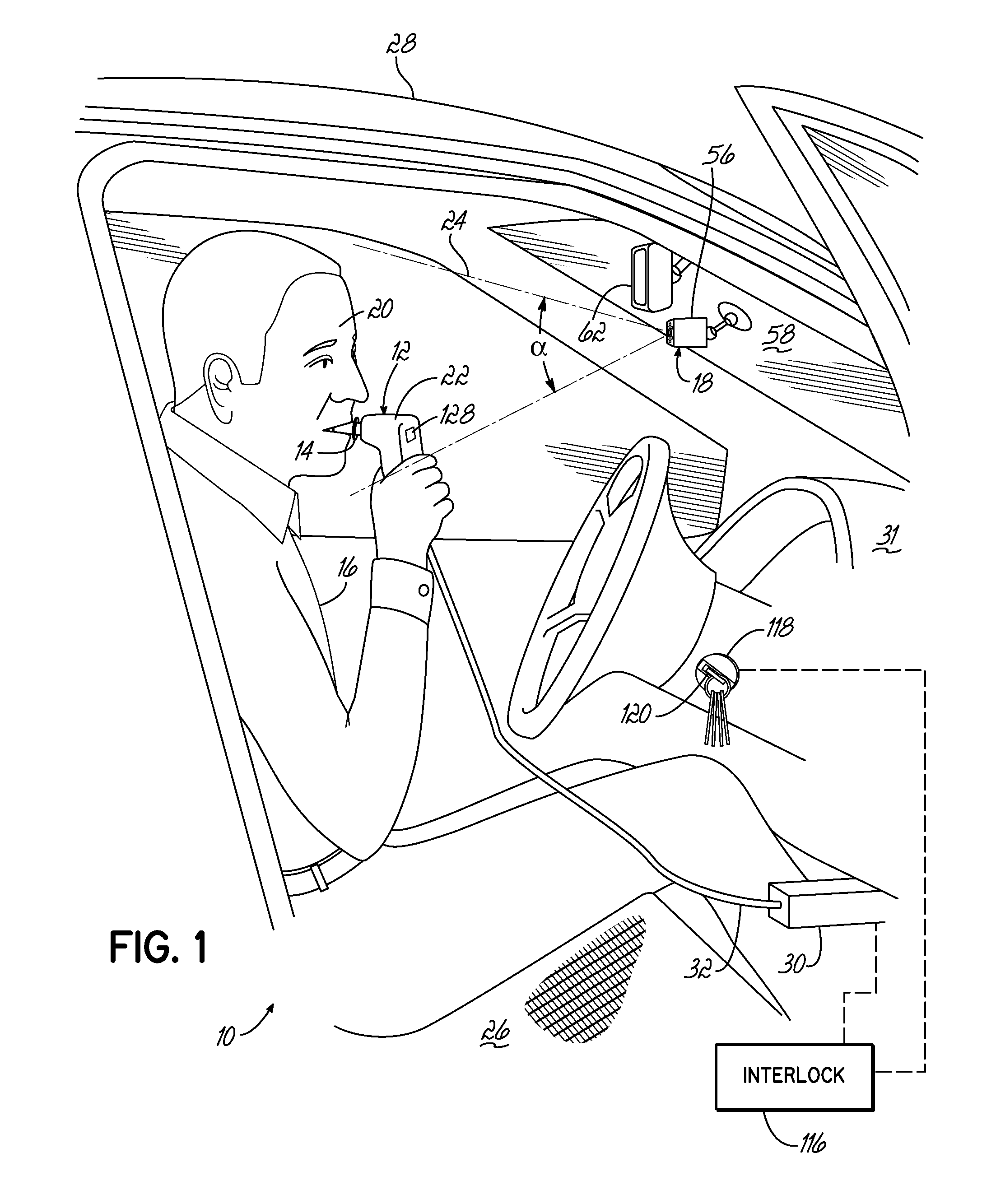Chemical impairment detection system and method of use to reduce circumvention
a detection system and impairment technology, applied in the field of chemical impairment detection systems, can solve the problems of motor vehicles driven by individuals who are chemically impaired, major safety problems, and putting the impaired driver at an increased risk of injury or death, so as to improve the identification of the user and prevent drunk driving
- Summary
- Abstract
- Description
- Claims
- Application Information
AI Technical Summary
Benefits of technology
Problems solved by technology
Method used
Image
Examples
Embodiment Construction
[0027]As shown in FIG. 1, the system 10 includes a chemical impairment detection sampling device 12 that is in operable communication with and responsive to a video surveillance system 18. In one embodiment, the hand-held device 12 is adapted for sampling a user's 16 breath through a mouthpiece 14 through which a user 16 provides a breath sample. The mouthpiece 14 may be disposable and can be configured so as to be required to be locked in the device 12 before a test can be taken. The mouthpiece 14 may also be constructed of a material, such as hard plastic, that will be resistant to bending.
[0028]To determine a user's 16 blood-alcohol content (BAC) from his or her breath, breath-sampling devices 12 typically require a “deep-lung” breath sample. Hence, the air that must be blown into the mouthpiece 14 generally must comprise alveolar air, which occurs when an expiratory breath substantially exhausts the lungs. Since breath expired from upper portions of the respiratory tract does no...
PUM
| Property | Measurement | Unit |
|---|---|---|
| temperature | aaaaa | aaaaa |
| threshold | aaaaa | aaaaa |
| aspect ratio | aaaaa | aaaaa |
Abstract
Description
Claims
Application Information
 Login to View More
Login to View More - R&D
- Intellectual Property
- Life Sciences
- Materials
- Tech Scout
- Unparalleled Data Quality
- Higher Quality Content
- 60% Fewer Hallucinations
Browse by: Latest US Patents, China's latest patents, Technical Efficacy Thesaurus, Application Domain, Technology Topic, Popular Technical Reports.
© 2025 PatSnap. All rights reserved.Legal|Privacy policy|Modern Slavery Act Transparency Statement|Sitemap|About US| Contact US: help@patsnap.com



